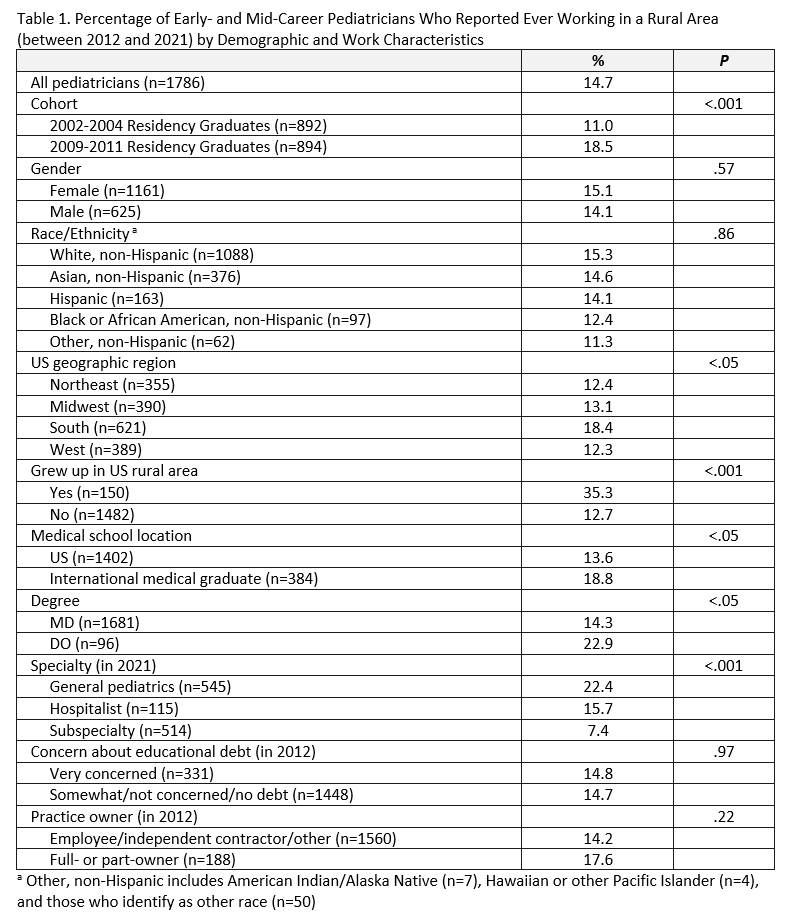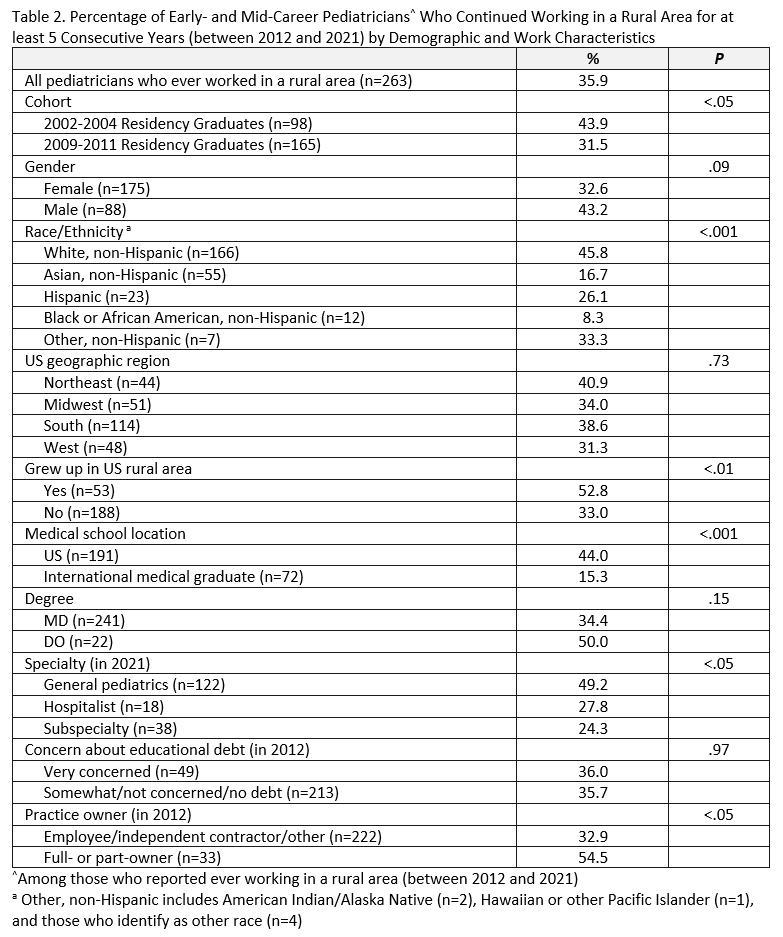Health Services Research
HSR 1: States, Medicaid, and the Structure of Health Care
579 - Characteristics Associated with Retention in a Rural Area Among Early- and Mid-Career Pediatricians
Publication Number: 579.222
- EG
Elizabeth A. Gottschlich, MA (she/her/hers)
Senior Research Associate
American Academy of Pediatrics
Itasca, Illinois, United States
Presenting Author(s)
Background: Research has shown there is a shortage of rural pediatricians. Some enter rural practice for specific reasons, such as loan forgiveness. Less is known about pediatricians who continue in rural areas.
Objective: Examine 1) proportion of early- and mid-career pediatricians who ever worked in a rural area from 2012-2021, 2) pediatrician characteristics associated with ever working in a rural area, 3) proportion who continued working in a rural area for 5 years or more, and 4) characteristics associated with such continuation (rural retention).
Design/Methods: National weighted longitudinal (2012-2021) survey data from 2 AAP Pediatrician Life and Career Experience Study (PLACES) cohorts: 2009-11 (n=894) and 2002-04 (n=892) residency graduates (40% enrollment, annual participation 76%-93%). Each year respondents described their primary work area (inner city/urban/suburban/rural). Chi-square examined variation in ever working in a rural area (at least 1 year during study period) by demographic and work characteristics. Rural retention was measured as pediatricians reporting a rural work area for at least 5 consecutive years in the 10-year period. Among those who ever worked in a rural area, chi-square examined variation in rural retention by demographic and work characteristics.
Results:
Among all PLACES pediatricians, each year 7-8% work in a rural area and 263 (15%) ever worked in a rural area between 2012 and 2021. Several characteristics were associated with ever working in a rural area (Table 1). Pediatricians who grew up in a rural area were more likely than those from non-rural areas to report ever working in a rural area (35% vs 13%, p< .001). General pediatricians (22%) and hospitalists (16%) were more likely than subspecialists (7%) to ever work in a rural area; p< .001.
Among those who ever worked in a rural area, 94 (36%) continued for at least 5 years. Several characteristics were also associated with rural retention including cohort, race/ethnicity, area grew up, medical school location, specialty, and practice owner (Table 2). Pediatricians who grew up in a rural area were more likely than those from non-rural areas to continue working in a rural area (53% vs 33%, p< .01). Retention was higher among US medical school graduates (44%) than international graduates (15%); p< .001.
Conclusion(s): Across 10 years, about 1 in 6 PLACES pediatricians ever worked in a rural area; however, only about a third continued for 5 years or more. Characteristics associated with rural retention included growing up in a rural area and graduating from a US medical school. Our findings may inform workforce discussions.

